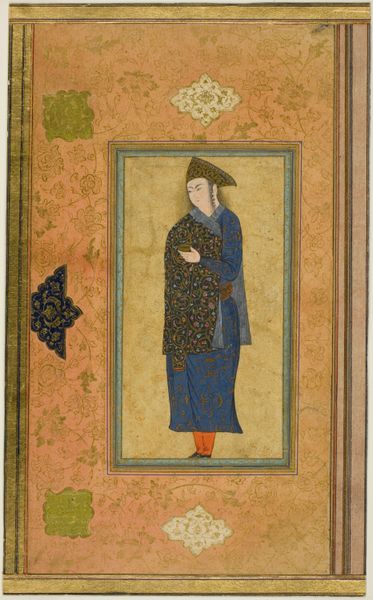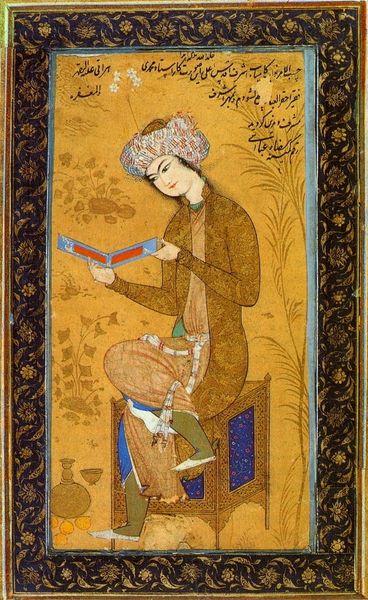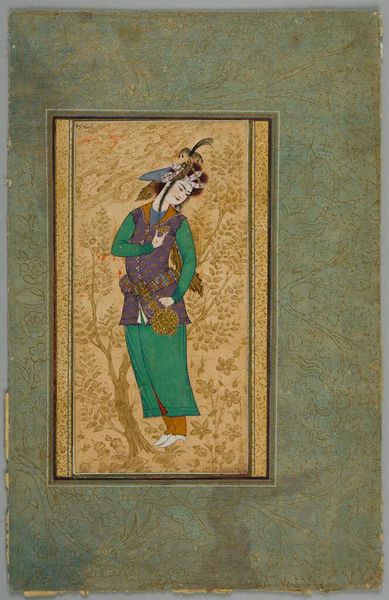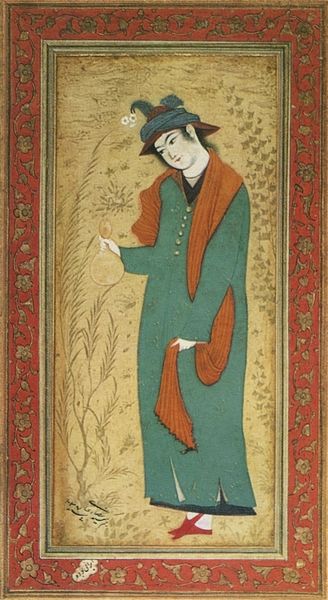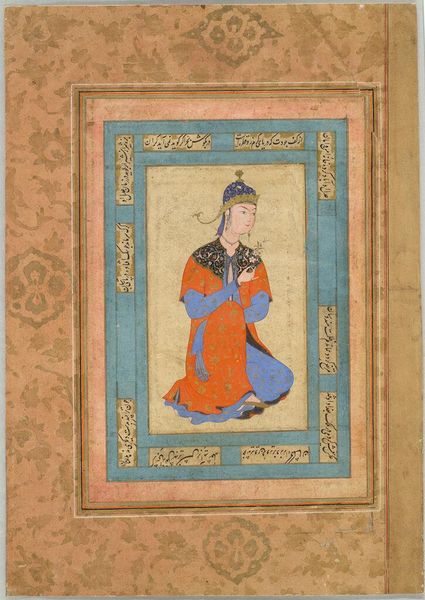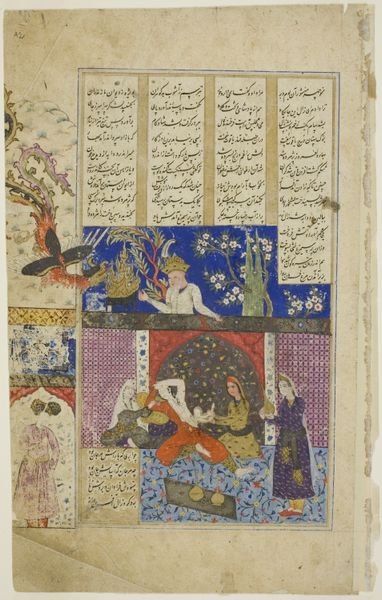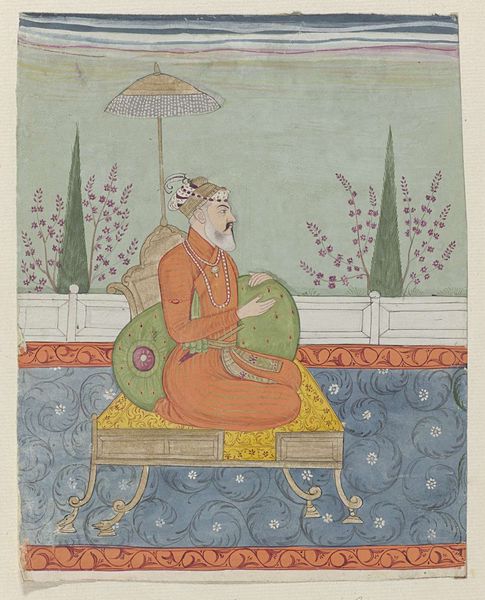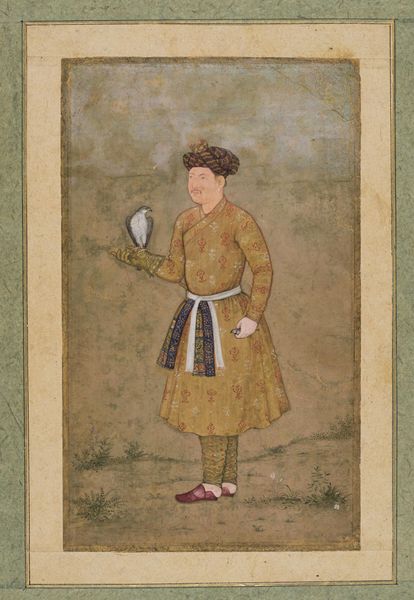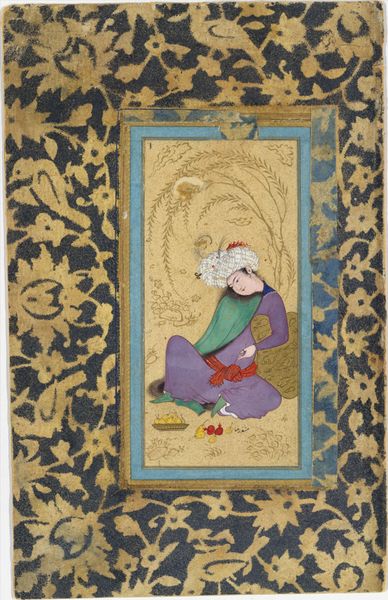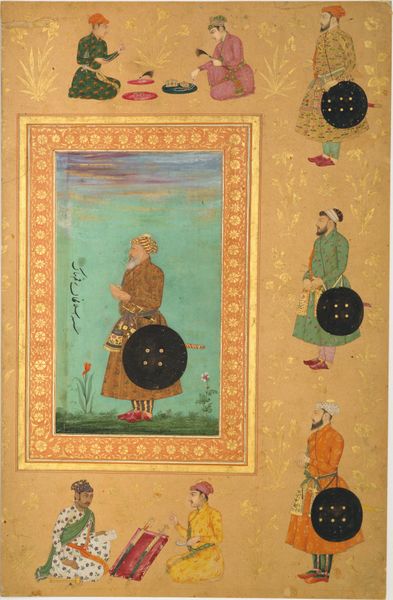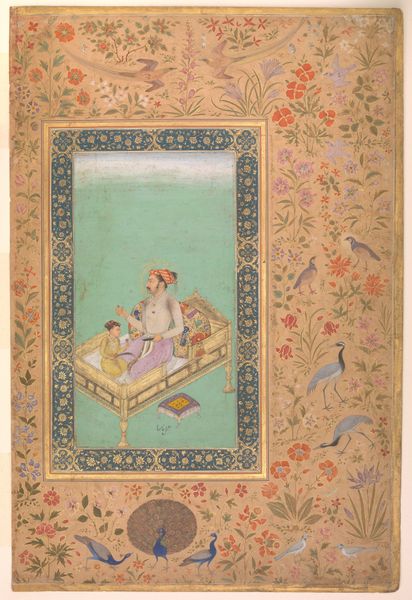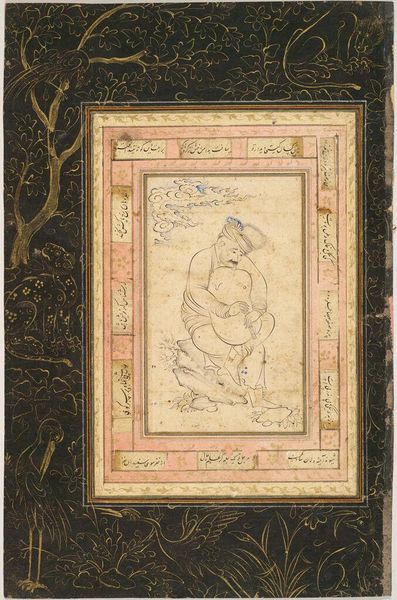
painting, earthenware
#
portrait
#
painting
#
earthenware
#
islamic-art
#
earthenware
#
miniature
Copyright: Public domain
Editor: This exquisite piece is called "Saki," crafted by Reza Abbasi in 1609. The medium appears to be paint on earthenware, with the style being a portrait miniature. I'm struck by the contrast between the delicate rendering of the figure and the surrounding elaborate details – the calligraphy is incredible! What do you see in this work? Curator: It's utterly charming, isn't it? This miniature draws us into the Safavid court, a world steeped in poetry, refinement, and…let's face it, a touch of theatricality. The figure is clearly a server, and their stylized pose, elaborate clothing – oh, and that hat! – aren't necessarily reflections of reality. Think of it more as a staged persona, like a character in a courtly drama. It almost feels like Abbasi is less interested in capturing a likeness and more in suggesting a mood, a certain cultivated aesthetic. The placement of the kettle—what does it suggest to you? Editor: That the painting is set for a tea service? Curator: Exactly! I see a theatrical set with this charming Saki as the main protagonist. Even the calligraphy that borders the work can be viewed through this dramatic frame. Think of it as stage directions, whispering secrets to those who understand the script. Editor: That’s such an interesting way to look at it – viewing the entire work as a scene from a play rather than a straightforward portrait. I'd not thought about the theatrical element until now. It's given me a lot to ponder about the artist's intention and the historical context. Curator: Indeed. This has opened my eyes too, especially considering the role clothing plays to the viewer in experiencing Islamic Art.
Comments
No comments
Be the first to comment and join the conversation on the ultimate creative platform.
